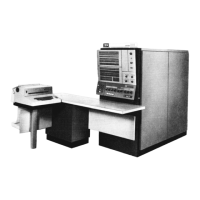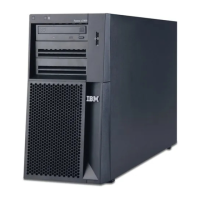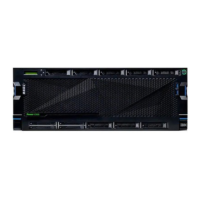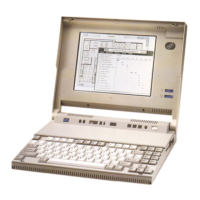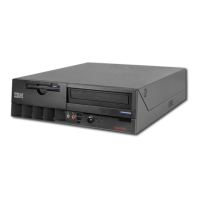2065 MAINTENANCE APPROACH
General
Analytical ability and troubleshooting proficiency are not easily taught or learned.
Usually, experience
is
the best teacher in this area. Everyone has some method
of
troubleshooting. Some ideas are good; some are not. This section
of
the handbook may
aid you in your own diagnostic approach
to
the Model 65. (Actually. many
of
the points
given here apply to any unit or system.)
Some good general rules, when followed,
will
aid any troubleshooting approach:
1.
Plan in advance - Ask
yourself
what
you
would
do
in the event
of
trouble in a given
area. What would you try first? Is there a simple instruction loop or one-card pro-
gram that can be used to exercise the failing area? Some mental exercises like this,
especially in the areas most susceptible to failure, will
payoff.
Write down your
approach and keep
it
handy.
2.
Have a plan
of
attack -
It
can be implemented in a few moments after trouble occurs.
Get in the habit
of
systematically eliminating
as
large an area
as
you can
as
a possible
trouble source.
Don't
jump
around and "'shoot in the dark."
3.
Don't
limit yourself - Some people
see
a red-light machine check and jump right
into
ALD's. Look around first. There are over 1500 indicators on the system control
panel. USE THEM! What instruction
is
in E-reg? Which register and adder gates are
on? What
is
happening in core and channel
at
this time?
Don't
use a scope when the
indicators can tell you
as
much.
4. Keep the diagnostic approach
as
simple
as
possible -
Don't
always usc the first failing
instruction you find
to
troubleshoot the problem.
Why
shoot a register gate trouble
using a floating-paint long multiply if you can get the trouble
to
show with
an
RR add?
Don't write a complicated program loop if you can
use
FLT's.
Gathering Facts
Before starting to look for the trouble, gather up all the facts about
it
that
you can.
Some
of
the basic 2065 error indications are:
1.
Red light (machine check).
2.
Wrong results.
3.
Hang (or loop).
4.
PQwer
drops.
Some typical causes
of
trouble in the 2065 are:
L Failing card (either making poor contact, has gunky pin,
is
loose, or has a defective
component).
2.
Failing cable.
3. Loss
of
voltage (lost in such a manner that system power stays up) such
as
a loose
crossover connector.
4.
Shorts (cold flow?).
5.
Opens.
6.
Tinting problem.
7.
Wiring error (most likely due to
EC
error).
8. Programming error.
9.
Operator error.
52
5/360
MODEL 65

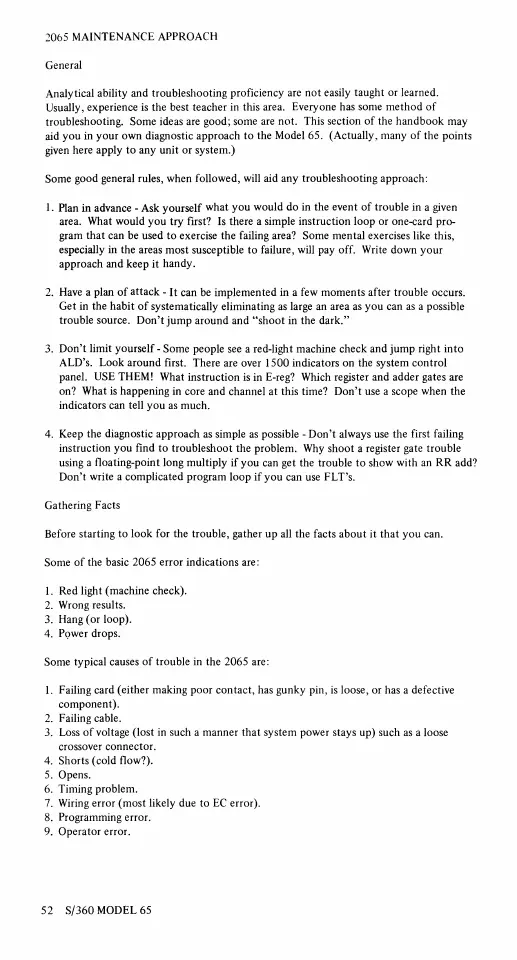